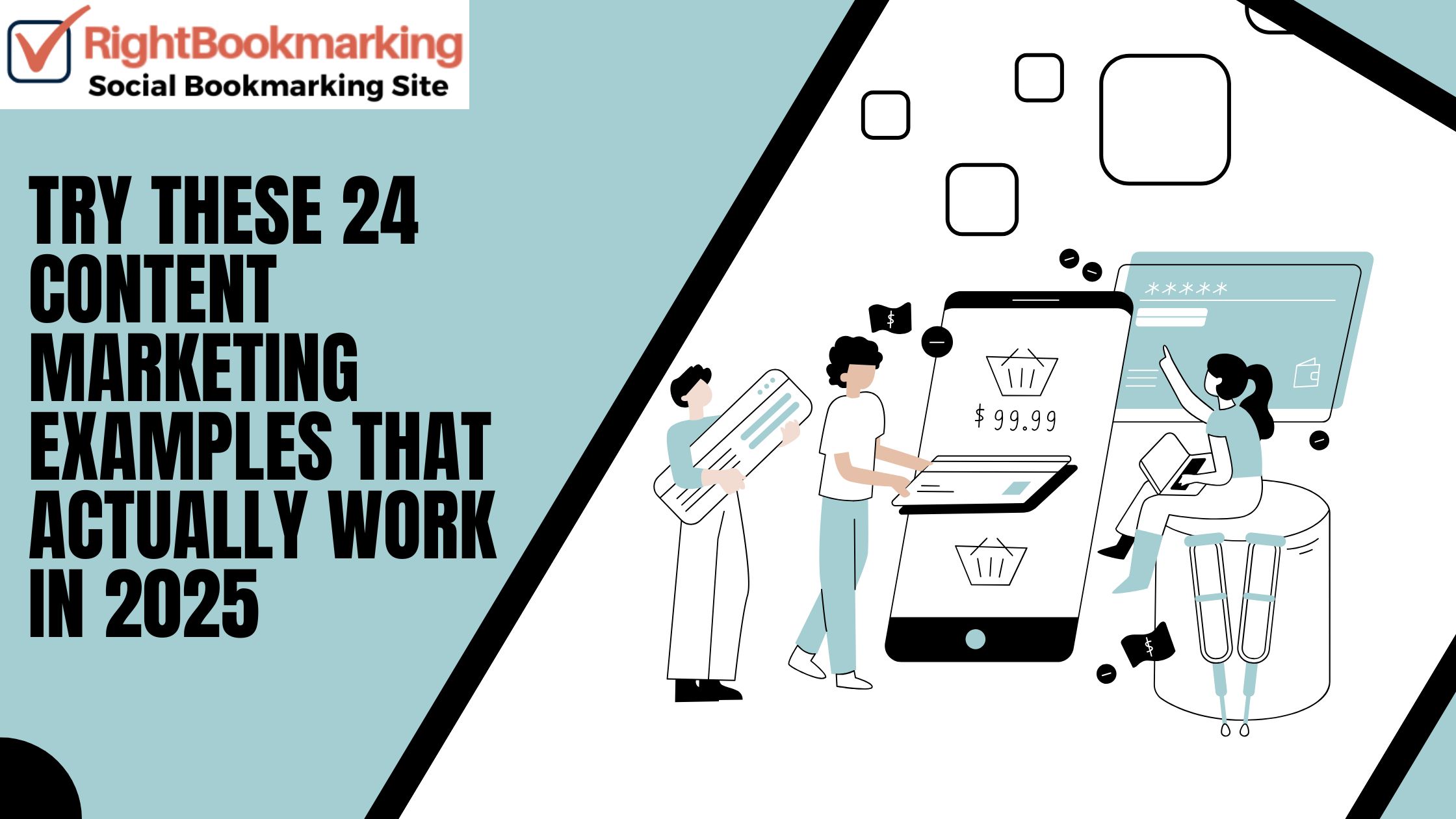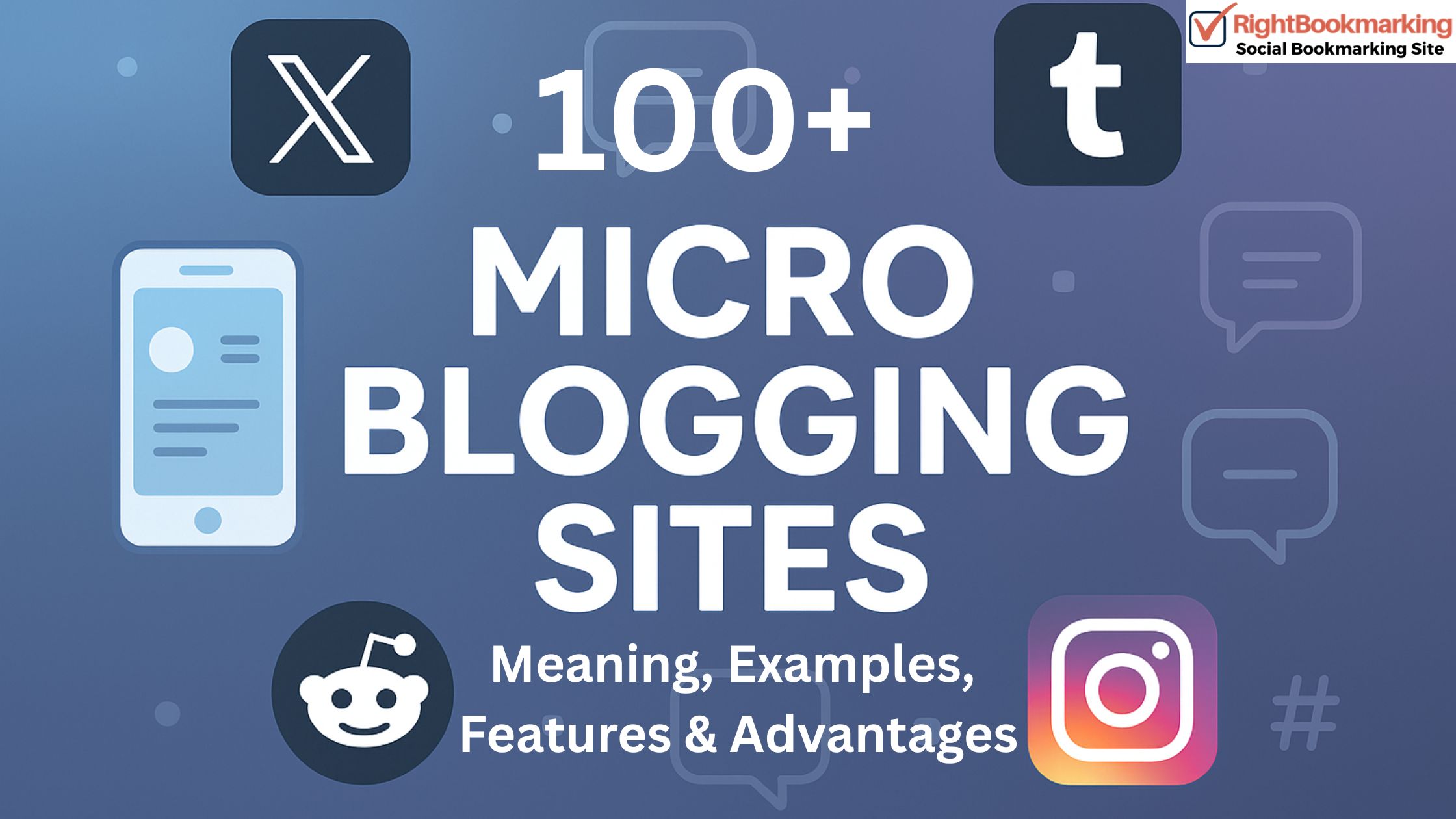Introduction: Why Content Marketing Matters Today
Content marketing is all around us—from social media and blog posts to videos and email newsletters. Content marketing enables brands to engage with individuals by providing value, not sales pitches. Rather than "Buy now!", content marketing speaks on the lines of, "Here's something for you."
If you want to develop your brand, build trust, and generate customers, you need content marketing. Here within this blog, we are going to inform you about what it is, give some useful tips, and introduce you to 24 content marketing examples that are working today.
What is Content Marketing?
Content marketing is a method of promoting your business by creating and spreading beneficial content like articles, videos, podcasts, infographics, or social media posts. It is intended to help your visitors while building the credibility of your brand.
Example:
A travel company can post blog posts on "Top 10 Beaches in Goa" instead of promoting travel packages directly. This educates users and builds credibility.
Why Content Marketing Works
- Builds brand awareness
- Increases organic (free) traffic
- Establishes customer loyalty and trust
- Improves SEO and Google rankings
- Drives conversions without hard selling
Top 24 Content Marketing Examples That Actually Work
Here are some real and practical content marketing examples that businesses are utilizing in 2025 to drive results.
1. HubSpot's Educational Blog Content
HubSpot is the founder of inbound marketing, and their blog is replete with SEO-friendly, practical tips. They produce how-to guides, templates, and industry content that solve a specific user issue.
Their consistent output builds credibility and positions them as an expert in online marketing. Their each blog post is SEO-friendly and composed with user intent.
Their downloadable items and free tools are lead magnets which convert readers to customers. This tactic pulls millions of monthly traffic and creates thousands of leads with no hard pitch approach—just value-based information that has users returning to the site.
2. Zomato's Sarcastic Social Media Posts
Zomato uses sarcasm, memes, and hyperlocal knowledge to connect with its foodie customer base on platforms like Instagram and Twitter. They prefer to post witty remarks on what's currently trending or cricket matches, connecting everything to food.
This renders content extremely relatable and shareable, going viral. Their use of smart local lingo and cultural allusions makes their audience feel that they are speaking to them personally. This does not explicitly sell food but builds top-of-mind familiarity and brand love.
Zomato is a past master at turning social media into a daily dose of entertainment and engagement—fueling app downloads and repeat visits.
3. Netflix's Behind-the-Scenes Videos
Netflix employs behind-the-scenes (BTS) clips, bloopers, cast interviews, and preview clips as content marketing. These posts give the audience an inside look at their favorite shows, increasing emotional connection and building anticipation for new series.
Instead of employing ads, Netflix establishes a culture of curiosity and discernment. Through the posting of BTS content on YouTube, Instagram, and the blog, Netflix maintains its fans engaged even off-season.
This strategy turns viewers into passionate fans who share episodes, discuss TV, and anticipate the next showing—resulting in higher retention and subscriber loyalty.
4. Coca-Cola's "Share a Coke" Campaign
Coca-Cola's iconic "Share a Coke" campaign personalized bottles with common names. This took an ordinary beverage and turned it into a shareable moment. Fans posed with their name bottles on social media, creating millions of word-of-mouth user-generated promotions.
Coca-Cola did not sell a product—Coca-Cola sold an experience. They enabled emotional storytelling, gifting, and toasting relationships.
The campaign rolled out globally, regionally named differently, and tallied up to a 2% sales lift in the U.S. alone. It's a classic piece of content marketing that ties branding, personalization, and virality together.
5. Spotify Wrapped Year-in-Review
Every December, Spotify sends "Wrapped," a personalized year-in-review of listener behavior. It has the users' favorite songs, genres, listening time, and fun comparisons. The users faithfully share their stats on Instagram Stories and Twitter, creating word-of-mouth buzz of brand consciousness.
The campaign translates data into play and spurs word-of-mouth marketing on a large scale. It's so well-liked that the users look forward to it each year, proving how personalization can foster brand loyalty.
Spotify Wrapped is the perfect combination of personalization, design, and social sharing—hence a top-performing digital content champion.
6. Nike's Empowerment Stories
Nike sells not just shoes, it sells strength, identity, and motivation. They use emotional video ads, blog stories, and social campaigns in combination with everyday athletes breaking through barriers.
Such empowering stories from deep emotional connections. The "You Can't Stop Us" video campaign is a great example—it blends real-life footage of athletes breaking down barriers by race, gender, and capability.
This builds brand loyalty, drives social discussion, and turns customers into die-hard fans. Nike's storytelling is consistent across channels and is among the world's most inspiring content marketing brands.
7. Google's "Search On" Real-Life Stories
Google's "Search On" campaign highlights how search is being utilized to overcome adversity, discover identity, or connect with others. From a deaf woman using Google Translate to a teacher creating welcoming classrooms, the stories are real and uplifting.
Google positions itself not just as an instrument, but as a force for good. These stories, told through YouTube, TV commercials, and social media, create sentiment and build brand trust. Each video shows how data changes lives.
This form of narrative marketing is more than promotion—it really speaks to values and universal human moments.
8. LinkedIn's Career Development Articles
LinkedIn is no longer a resume website anymore. Through its blog and content hub, it publishes job search tips, interview tips, leadership guidance, and productivity advice. These articles are published by career experts and by LinkedIn itself.
Their approach is instructive and highly relevant to their audience. The content is optimized for feed engagement and search, so professionals can more easily discover answers they seek.
By sharing free guidance and qualified analysis, LinkedIn makes users return again and again—return-visit to some degree—making it a great model for educational content marketing.
Meanwhile you will love this submissions sites:
100+ Free Profile Creation Sites List
Top Free Blog Submission Sites
9. Red Bull's Adventure-Based YouTube Content
Red Bull is the king of content-first branding. Instead of marketing energy drinks, they sponsor extreme sports, create documentaries, and have a top-performing YouTube channel.
Their subjects cover everything from skydiving in space, to mountain biking in Utah, and surfing on remote islands. Lifestyle, adrenaline, and performance are emphasized.
The marketing for Red Bull is content-based, with the brand integrated without explicit mention of the name. By doing this, they build a loyal following that looks to the brand for its engaging content—not necessarily its product. It's entertainment marketing at its finest.
10. L'Oréal's Instagram Beauty Tutorials
L'Oréal utilizes Instagram for how-to and storytelling content. Their short beauty tutorials, skincare tutorials, and product tutorials segment complex makeup steps into simple-to-follow instructions.
L'Oréal uses influencers, normal users, as well as professional artists to create real-life content for which anybody with any level of skill can relate. L'Oréal also uses reels and Instagram stories for polling, Q&As, as well as customer opinion gathering.
This back-and-forth creates trust and gives the customer the sense that they're being heard. Their blog entries aren't salesy but encourage exploration and purchasing naturally. It's a fantastic example of edutainment—education + entertainment.
11. Canva's Design Blog and Free Templates
Canva's blog is replete with design, branding, and marketing advice. They also have free templates available for resumes, presentations, social media posts, and more. These resources allow users to make fantastic-looking visualizations—despite having no design experience.
Each blog post includes in-line templates which encourage the user to act immediately, increasing tool usage and conversions. Their content strategy is based on solving real user problems while organically featuring Canva's capabilities.
This tactic converts passive readers into active users. By combining SEO-rich information blogs with action-oriented tools, Canva is now one of the top design platforms globally through natural content.
12. Moz's Whiteboard Friday Series
Moz's "Whiteboard Friday" is a weekly video series where SEO experts dissect complex problems in a simple, visual way on a whiteboard. Trends, tips, and strategies that allow marketers to improve search rankings are covered in the videos.
A blog post for SEO, transcriptions, and visual summaries are embedded within each episode. Consistency in Moz has garnered a loyal following as well as turned the series into a marketers' favorite.
By breaking down complex concepts and the application of real examples, Moz demonstrates expertise as well as boosts brand interaction. This is a perfect use of video for long-form educational content.
13. Amazon's "Build Your Business" Success Stories
Amazon features real success stories of entrepreneurs who grew their businesses on its platform. Case studies are published on blogs, YouTube, and social media. They identify specific issues and the ways Amazon tools helped solve them—like improving speed of delivery or accessing more buyers.
This content makes the brand personal and invites other sellers to join. By focusing on customer victories instead of promoting the brand, Amazon gives value-based storytelling.
These kinds of stories are ideal for B2B content marketing, building trust and encouraging further sign-ups from potential business users.
14. Buffer's Transparent Blogging
Buffer, a social media scheduling tool used online, is famous for being ultra-transparent. They maintain an open blog that posts company metrics, wages, growth strategies, and failures. Transparency builds trust and attracts readers who believe in transparency.
They also create detailed blog entries on productivity, remote working, and social media marketing tips, targeted particularly towards freelancers and marketers. The blog is long-tail keyword-optimized and often goes viral for the distinct information they share.
Buffer's approach demonstrates the potential of authentic, true, and data-based content cutting through in a saturated space.
15. Mailchimp's Animated Product Explainers
Mailchimp uses animated video to explain how their email marketing software works. These are short, colorful, and easy to understand—ideal for beginners.
The animations slice features like automation, A/B testing, or segmentation into a mere 60 seconds. They position these on YouTube, landing pages, and support pages. Animation allows them to cut through jargon and establish value in seconds.
It accelerates onboarding, reduces support requests, and boosts user satisfaction. It's a classic case of using explainer content to drive product adoption and user engagement.
16. Tasty's Short-Form Recipe Videos
Tasty on Buzzfeed took the world by storm with its 60-second recipe videos. They're professionally produced top-down videos containing mouthwatering recipes step by step, which are easy to follow and re-share.
Optimized for Facebook, Instagram, and YouTube, the videos utilize popular foods or on-trend ingredients typically based on seasons. With little narration and robust visuals, the material transcends language differences.
Tasty's success lies in balancing utility (easy recipes) with visual appeal (close-up shots of food), turning occasional viewers into frequent ones. It's also a useful testament to the ability of snackable video content to drive massive engagement.
17. Salesforce's Customer Case Studies
Salesforce presents in-depth case studies of how companies increased sales, service, and customer success with their CRM offerings. These are real stories with quotes, outcomes, and graphical dashboards.
These case studies can be filtered by industry, size, and use case, so users can find relevant examples. Salesforce also augments this content with webinars and downloadable PDFs, so it's lead generation assets.
It's an excellent example of B2B storytelling that succeeds—using actual numbers, actual voices, and relevant context to move prospects through the funnel.
18. Apple's "Shot on iPhone" Campaign
Apple's "Shot on iPhone" marketing campaign features real photos and videos that users took, showcasing the quality of iPhone's camera. User-generated submissions become billboards, social status updates, and gallery features on Apple's website.
It is a product demonstration coupled with customer victory. By integrating users, Apple turns customers into creators. This creates word-of-mouth organically and builds product authenticity.
Instead of selling specifications, Apple lets results be its marketing message. It's among the best user-generated content and brand community driven content marketing.
19. Duolingo's Funny TikTok Videos
Duolingo's TikTok is loud, in-your-face, and even more unexpectedly humorous. Its owl logo is reimagined as a Gen Z character dancing, crying, and flirting—as always nudging users to complete their language studies.
The humor is crude and down-to-earth, so it is believable. Duolingo doesn't hard-sell functionality—it entertains while upholding its fundamental message. The payoff? Millions of organic views, meme status, and app downloads.
Their TikTok approach demonstrates how brands can triumph by embracing platform culture rather than resisting it. It's viral content marketing in action.
20. Ahrefs' SEO Case Studies and Data Reports
Ahrefs, an SEO tool, regularly releases in-depth experiments and case studies that test and verify SEO strategies. Their YouTube and blog content cuts deep, displaying actual rankings, graphs, and performance.
These in-depth articles draw more advanced marketers searching for actual outcomes—not merely theory. Their research-driven content attracts links from prominent publications and establishes their credibility within their niche.
Unlike fluff blogs, Ahrefs discloses actual outcomes that other marketers can emulate. This scientific data-focused strategy has established them as a content force to be reckoned with within the marketing sphere.
21. Notion's Productivity Templates and Tutorials
Notion provides free templates for students, professionals, and businesses to monitor projects, goals, and notes. The templates are published via blog posts, YouTube walkthroughs, and social posts.
Notion also highlights how users build personal systems and encourages others to adopt the tool. Their content is minimal, clean, and functional—attuned to the look of the brand.
By way of use cases and productivity benefits, Notion welcomes new users with ease. The templates aren't only helpful—they're shareable, and that makes them a content asset.
22. Adobe's User-Centric Creator Spotlights
Adobe also features artists, designers, and filmmakers using its tools from time to time. These are told as user stories in video, blog, and social posts—often telling how a creative project was made using Photoshop, Premiere, or Illustrator.
Adobe also sponsors challenges where users are prompted to create something based on what they are given. This creates massive engagement and makes Adobe more of a creative enabler than a software seller.
These tales focus on process, emotion, and achievement—giving users pride and credit. It's a great blend of brand advocacy and user-generated content.
23. Grammarly's Weekly Writing Tips
Grammarly delivers weekly grammar advice, writing advice, and vocabulary lessons by email in manageable chunks to students, writers, and business professionals. They also maintain a blog with longer posts on tone, clarity, and productivity.
Their content is reinforcing the product's value while educating users. By encouraging people to communicate better, Grammarly establishes trust and habitual usage.
Their suggestions are always being promoted on LinkedIn and Twitter, so they organically build their following. It's a great case of continually refreshing evergreen material with real-world usage.
You Will Like This:
Top 50 PDF Submission Sites List
Latest Do-Follow Social Bookmarking Sites List
Top 70 Image Submission Sites with High DA & PA
Free Article Submission Sites List Instant Approval
Top 30 PPT Submission Sites in India
24. Tesla Product Teasers via Elon Musk's Tweets
Tesla seldom employs conventional advertisements. Instead, it relies on Elon Musk's Twitter account and teaser clips to create word-of-mouth. Elon's messages on future models, software updates, or AI features usually go viral, generating global media coverage without a single dollar spent on advertising.
Tesla's underplayed website announcements and video promos generate mystery and excitement. The key is in community buzz, scarcity, and emotional passion.
It's a modern, founder-led content marketing approach that integrates social proof, thought leadership, and storytelling into one.
Content Marketing Success Tips
To put these content marketing examples into practice in your business, employ these tips that have been tested and proven to be effective:
- Know Your Audience: Discover their needs, issues, and interests.
- Start Small: Begin with blogs, videos, or social posts.
- Be Consistent: Post often to stay visible.
- Use SEO Wisely: Naturally add keywords, internal links, and image optimization.
- Measure Results: Track traffic, shares, and conversions.
- Add Value: Educate, entertain, or solve a problem.
Basic Content Marketing Strategies
- Blogging – Publish useful and keyword-rich posts.
- Video Content – Use reels, YouTube, or explainer videos.
- Email Newsletters – Stay in touch with your visitors on a consistent basis.
- Infographics – Put data and advice into visual form and make it easy to share.
- User-Generated Content – Feature actual customers.
- Social Media Campaigns – Engage with trends, challenges, and storytelling.
- Ebooks and Case Studies – Offer comprehensive content for leads.
- Podcasts – Share insights in audio form for learning on the move.
Conclusion: Your Turn to Create
Content marketing is not just for giants. Whether you have a blog, a store, or a YouTube channel, content can make you grow. Use these 24 effective content marketing examples to get your next post, campaign, or strategy inspired.
Don't forget: Be consistent, think of value, and measure your outcomes. That's how content marketing succeeds.




